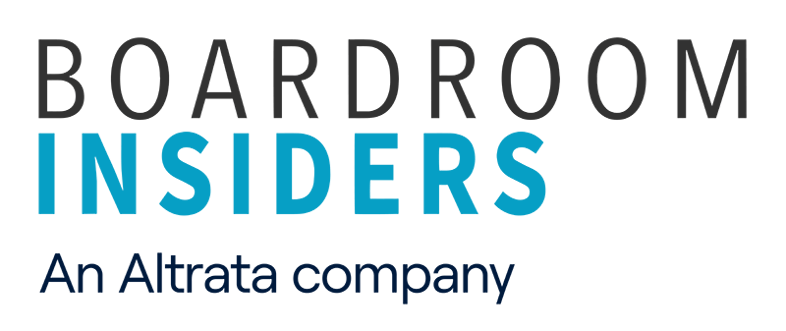The ways in which we work and collaborate have changed so much over the last year, and now, corporate teams must plan for next year and beyond. Whatever comes next, one thing is certain: The future of work will never be the same.
At Boardroom Insiders, we specialize in knowing what executives prioritize above all else, and we’ve noticed a movement of reimagining office spaces, upgrading digital infrastructure and leading with empathy. It’s a whole new world, but then again, if there was ever a time for a company to try something new, it’s now.
Here’s what we’re seeing.
Experimenting with flexible offices
While a global pandemic forced mass adoption of remote work, the pros and cons of continuing that strategy have been hotly debated. Many cherish the flexibility while others still prefer the intangibles of an office culture.
To enjoy the best of both worlds, some companies are leaning into a hybrid model, and Google is leading the way. CEO Sundar Pichai said in a September interview that the tech giant is reconfiguring its offices to make way for this new environment. The decision comes after Google announced in July that it was extending a voluntary work-from-home option deep into 2021 to help employees retain work-life balance amid worldwide uncertainty. More recently, the company conducted a survey that indicated the majority of employees believe they need to be in the office some days a week to succeed. The new office configuration will be able to accommodate those competing needs.
Upgrading digital infrastructure
To facilitate a more decentralized workforce, companies are having to retool and invest to maintain productivity from a distance. That means enterprise servers are out, and the cloud is in. As a result, cloud-based computing and related technology have seen record demand, with cloud provider Snowflake’s market cap doubling instantly in its September IPO.
The need to implement technology more effectively is also prompting executives to make structural changes within their organization. For instance, farm equipment manufacturer Deere & Company announced in their July earnings call that they had introduced a chief technology officer position within their organization.
“We created a chief technology officer role to better leverage our technology stack throughout the enterprise and sharpen our focus on the next generation of precision ag innovations,” Ryan D. Campbell, CFO and SVP at Deere, said on the call.
Leading with empathy for employees
The coronavirus pandemic has been a time of considerable stress in the professional and personal lives for millions of employees around the world. With political action increasingly complicated during an election year, some leadership teams are taking it upon themselves to look out for their employees’ overall well-being.
A standout example of this has been HR and financial software company Workday. In September, the company announced it was offering schedule flexibility for caregivers with increased back-up care reimbursement. The company also said it would offer full-time employees the option to transition to part-time for personal needs.
Like other companies, Workday has operated an employee relief fund to offset personal expenses incurred from COVID-19. The company was recently ranked fifth on Fortune magazine’s list of 100 Best Companies to Work For.
What they’re saying
“The ability to connect with people, the ability for teams to work together in an ad hoc fashion—you can do it virtually, but it isn’t as spontaneous…We are looking forward to returning to the office.” – Ardine Williams, vice president of workforce development at Amazon. [August 2020]
“We’re serious about a distributed workforce, and we’ve proved we can make it work… If you’re in a role and situation that enables you to work from home and you want to continue, do so…forever if you want!” – Jack Dorsey, Twitter CEO [May 2020]
“COVID-19 has so far tested companies’ agility, flexibility and emergency response on a day-to-day, tactical basis. As we start to emerge from lockdown restrictions, a successful “restart” requires more than the requisite health and safety protocols; it requires renewed trust and collaboration between companies and employees. Employers have an opportunity to “hit reset” on traditional workplace practices – many of which have remained largely unchanged since the industrial revolution.” – Alain Dehaze, CEO of The Adecco Group [July 2020]
“This is no longer about reacting to the COVID-19 situation. It's about proactively using the experience of the last few months to create a more flexible, agile future. We want to leverage and enhance what we've learned to explore how we can work differently. And we want to ensure we maintain the key elements of our culture that keep our colleagues engaged and inspired.” – John Haley, CEO of Willis Towers Watson [July 2020]
Trending right now
- Deploying protocols for safe reopening
- Reaffirming company culture during a transitional year
- Restructuring teams for agility and efficiency in an uncertain economy
- Developing omnichannel fulfillment models for e-commerce demand
- Undertaking carbon-neutral and renewable energy initiatives
- Engaging with stakeholders and customers to develop new value propositions
- Navigating new “Return to Office” tech and apps designed to keep workers safe
Your Next Steps
We all need to be aware of how executive priorities are changing. Marketers should be focused on bringing the latest information to their account teams as it develops. Given that we employ a small army of really smart people to read and parse corporate earnings call transcripts and CXO interviews all day long, we can help by feeding you the latest.
What do you do with this information? Do what you have always done — align and support. Here are the four questions you should try to answer about all of your top accounts:
- How has their strategy/priorities shifted post-COVID-19?
- What are they cutting?
- Where are they investing--or doubling down?
- What can you offer that supports their current focus?






Share Your Thoughts